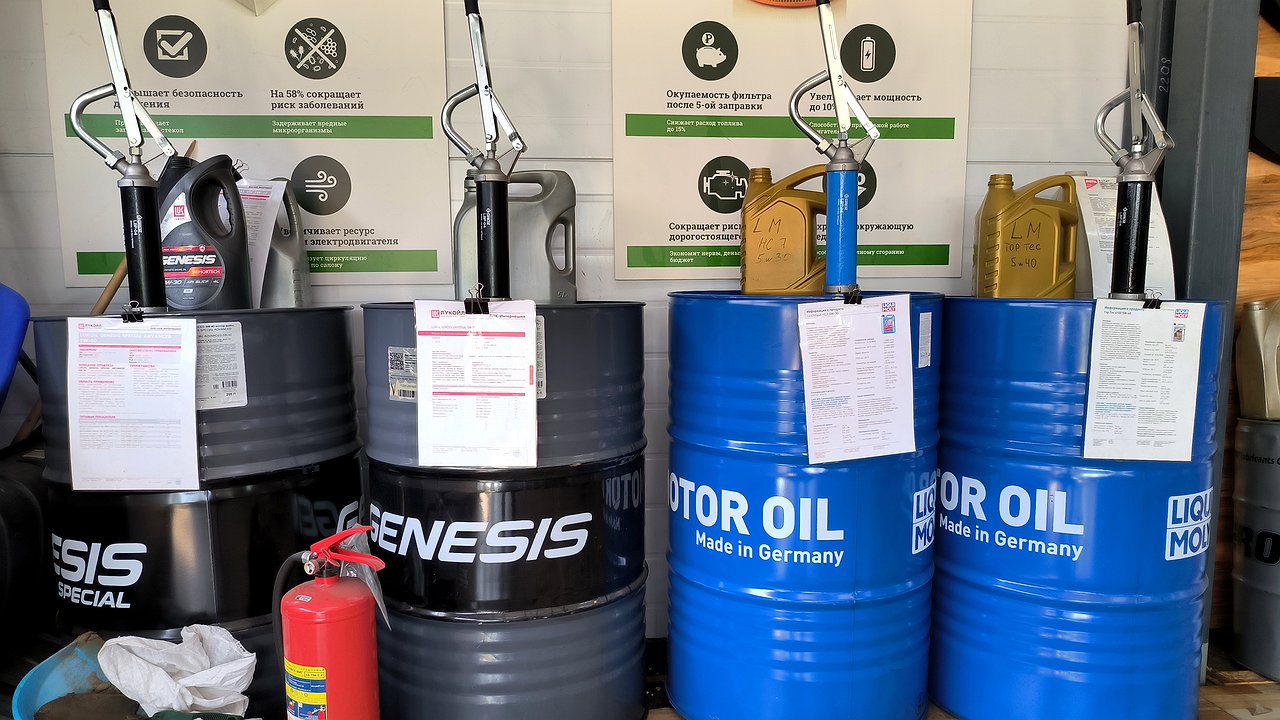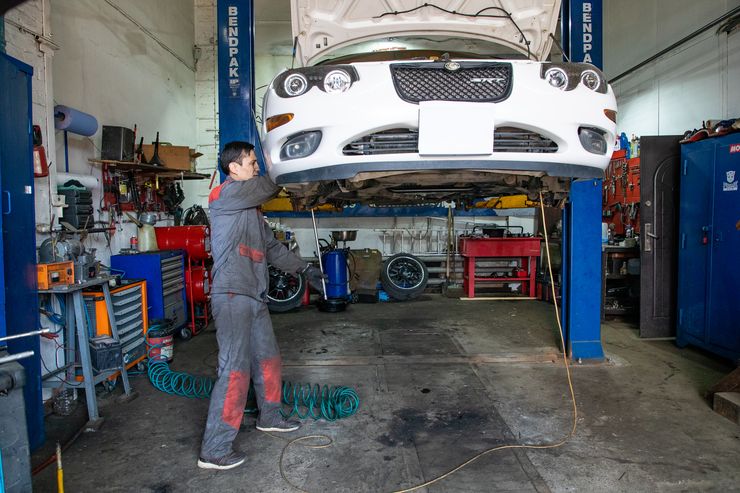Cheap repairs of car engines: how to cure oil burns for a few rubles
- December 13, 2023
- 0
A drop in the engine oil level is fatal for an internal combustion engine: wear will occur, then a “wedge” will appear, and then a long and expensive
A drop in the engine oil level is fatal for an internal combustion engine: wear will occur, then a “wedge” will appear, and then a long and expensive

When a workshop owner hears from a customer that he is running out of oil, he immediately goes to the websites of car dealers and developers. Reflexively, without thinking about it, because the income is shining and the cash register may not close anymore. Any repair of an internal combustion engine today is a flight to space: prices for spare parts and labor are so high that a loan may be necessary. And lubricant consumption is a direct symptom of unit failure. After all, it is rare for a customer to open the book that comes with the car and read the page that lists the permitted amounts of lubricant.
But when it comes to liters per thousand km, it is really worth thinking about. Such ‘hunger’ is a signal of a malfunction, but how serious it is remains to be seen. Experienced and honest technicians who do not take advantage of the visitor, offer this path: from simple to complex. This approach always works in everything, but in the case of oil spills it is especially relevant. Because first you have to make sure that there is the same waste.
And the first thing you need to do is put the car on a lift and check for leaks. Yes, yes, a child’s case, but it happens very often. The average age of a car in Russia is 15 years. During this time, all seals are “soured”, all tubes are stretched, all rubber bands are worn out, and all sensors are worn out without exception. Oh yeah, the sump basin was rotten too.
But in three out of four cases, a cheap part is to blame: the drain plug. First, with any replacement, the copper washer underneath should also be replaced, if the design requires it. Are they changing? Of course not. They put the old one back on and secured it tighter. This tightening ultimately leads to two problems at the same time: the oil pan can crack or, as often happens, the thread of this plug can be licked off. And the oil starts to flow out. How many? To be honest, a lot: up to the same liter for a thousand kilometers or more. What must we do?
Always change first and carefully check the presence of the washing machine. It costs 10 rubles – without exaggeration or understatement – but it does the job. Secondly, if it has already been licked, the crankcase must be removed, cut a new thread and select a plug from stock in the store to meet the new parameters. Beautiful, beautiful, but they are different in different models with combustion engines. By the way, a part of LADA Largus is often suitable – it is slightly larger than the standard “foreign” one. About the bees: The thread on the cork itself also licks off periodically, so the possibility of leakage is possible for this reason. Well, if the crankcase cracks as a result of the efforts made – boil, boil and boil again. And if it doesn’t work out, change it.
Is the oil leaking? Stop being hysterical. First answer the question “should it go away?” and then check all stains. Then evaluate at what point, in the city or on the highway, consumption is particularly high and carefully evaluate the smoke coming from the exhaust pipe. And only then make a decision about repairs. This way it will be cheaper.

When a workshop owner hears from a customer that he is running out of oil, he immediately goes to the websites of car dealers and developers. Reflexively, without thinking about it, because the income is shining and the cash register may not close anymore. Any repair of an internal combustion engine today is a flight to space: prices for spare parts and labor are so high that a loan may be necessary. And lubricant consumption is a direct symptom of unit failure. After all, it is rare for a customer to open the book that comes with the car and read the page that lists the permitted amounts of lubricant.
But when it comes to liters per thousand km, it is really worth thinking about. Such ‘hunger’ is a signal of a malfunction, but how serious it is remains to be seen. Experienced and honest technicians who do not take advantage of the visitor, offer this path: from simple to complex. This approach always works in everything, but in the case of oil spills it is especially relevant. Because first you have to make sure that there is the same waste.
And the first thing you need to do is put the car on a lift and check for leaks. Yes, yes, a child’s case, but it happens very often. The average age of a car in Russia is 15 years. During this time, all seals are “soured”, all tubes are stretched, all rubber bands are worn out, and all sensors are worn out without exception. Oh yeah, the sump basin was rotten too.
But in three out of four cases, a cheap part is to blame: the drain plug. First, with any replacement, the copper washer underneath should also be replaced, if the design requires it. Are they changing? Of course not. They put the old one back on and secured it tighter. This tightening ultimately leads to two problems at the same time: the oil pan can crack or, as often happens, the thread of this plug can be licked off. And the oil starts to flow out. How many? To be honest, a lot: up to the same liter for a thousand kilometers or more. What must we do?
Always change first and carefully check the presence of the washing machine. It costs 10 rubles – without exaggeration or understatement – but it does the job. Secondly, if it has already been licked, the crankcase must be removed, cut a new thread and select a plug from stock in the store to meet the new parameters. Beautiful, beautiful, but they are different in different models with combustion engines. By the way, a part of LADA Largus is often suitable – it is slightly larger than the standard “foreign” one. About the bees: The thread on the cork itself also licks off periodically, so the possibility of leakage is possible for this reason. Well, if the crankcase cracks as a result of the efforts made – boil, boil and boil again. And if it doesn’t work out, change it.
Is the oil leaking? Stop being hysterical. First answer the question “should it go away?” and then check all stains. Then evaluate at what point, in the city or on the highway, consumption is particularly high and carefully evaluate the smoke coming from the exhaust pipe. And only then make a decision about repairs. This way it will be cheaper.
Source: Avto Vzglyad
Donald Salinas is an experienced automobile journalist and writer for Div Bracket. He brings his readers the latest news and developments from the world of automobiles, offering a unique and knowledgeable perspective on the latest trends and innovations in the automotive industry.